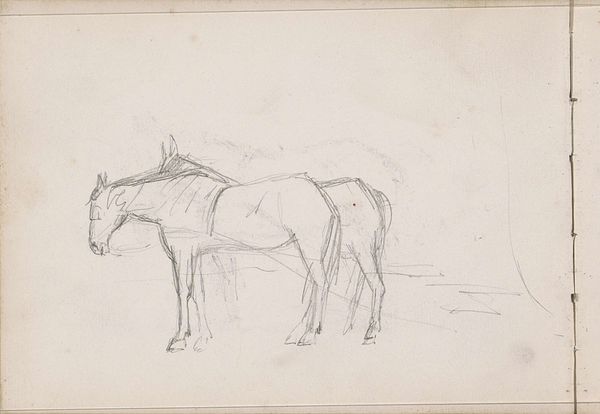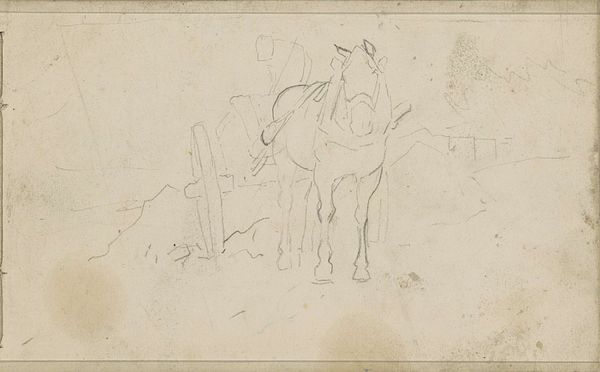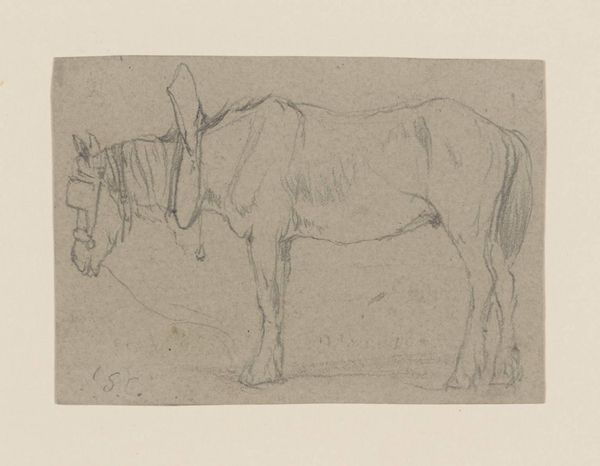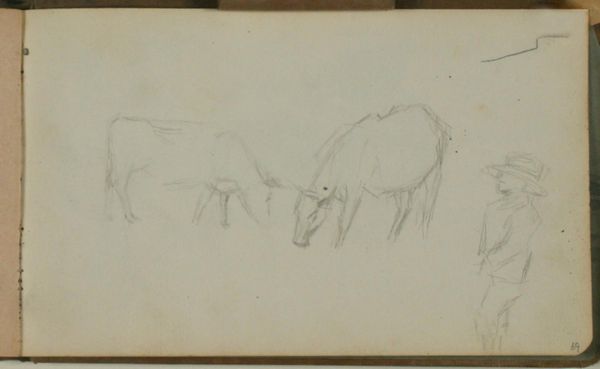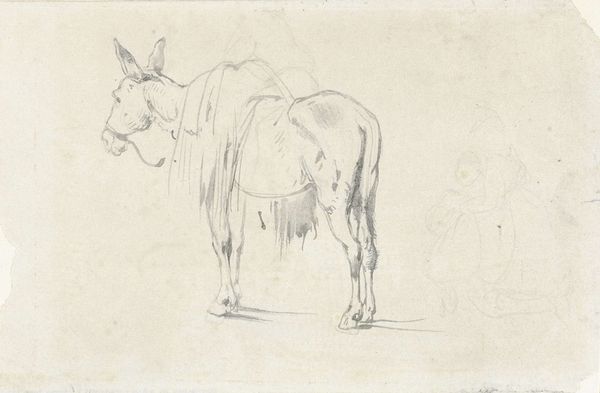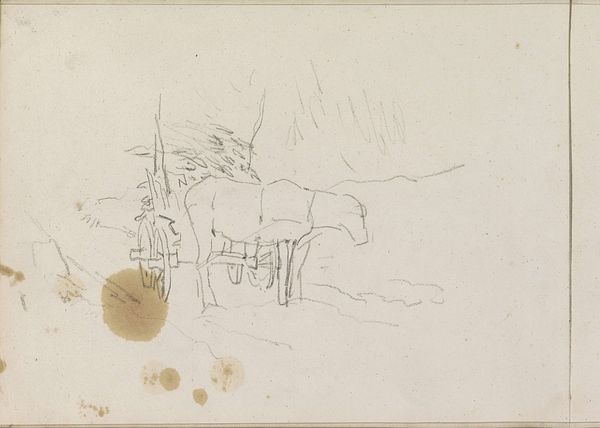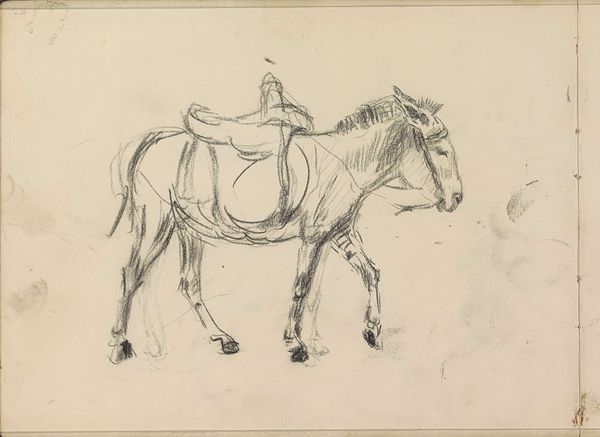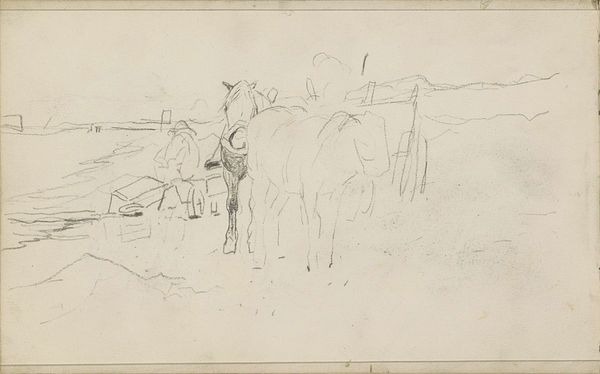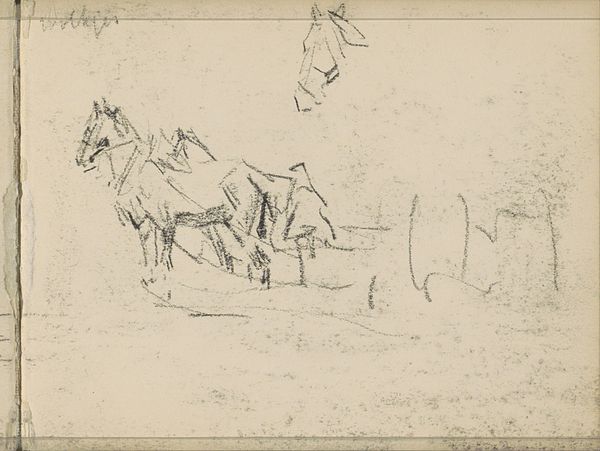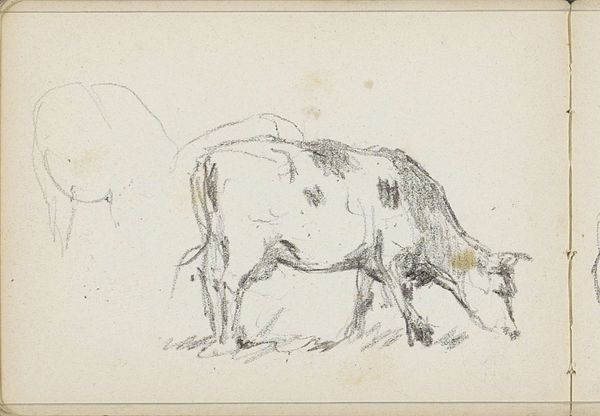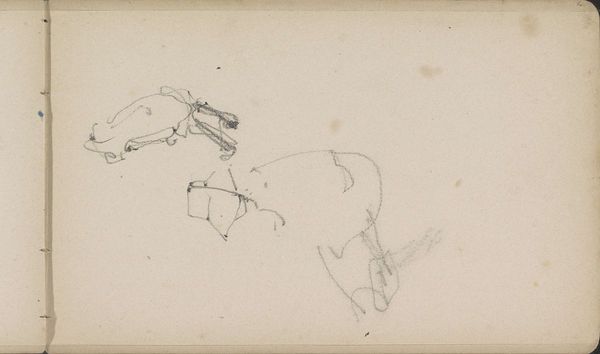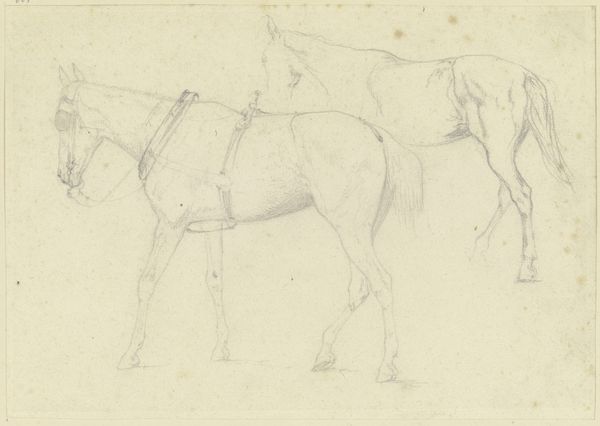
drawing, paper, pencil
#
drawing
#
animal
#
pencil sketch
#
landscape
#
figuration
#
paper
#
pencil
#
horse
#
line
#
realism
Copyright: Rijks Museum: Open Domain
Curator: Here we have "Drie paarden," or "Three Horses," a pencil drawing on paper attributed to Anton Mauve, created sometime between 1848 and 1888. It resides here in the Rijksmuseum. Editor: Immediately, there's this fleeting sense of movement, or rather, impending movement. They're about to go somewhere. Or perhaps they're waiting... It’s beautifully understated, like a memory fading at the edges. Curator: Indeed. Mauve was part of the Hague School, and this drawing typifies their interest in rural scenes and the lives of working animals. It emphasizes realism and atmospheric effects. These studies were often precursors to larger paintings, capturing authentic Dutch life away from the grand narratives. Editor: Authentic, yes, but it's more than a simple record. Look at the sensitivity in those lines! Each one seems to breathe. There's a certain weight to the horses, a solidity. Yet it’s rendered with such lightness. Did Mauve labor on many drafts of such drawing, I wonder? Or did this all happen in a inspired frenzy? Curator: It’s hard to say definitively. Given that it's a study, one can imagine it was a process. But also, art academies have a heavy culture in favor of capturing quickly on the page one's vision in order to study different configurations that might inform a painting or other final work of art. What appears spontaneous and effortlessly truthful often involves careful observation and honing one's craft within those formal spaces. Editor: Perhaps both, a dance between instinct and intellect, yeah? I am just struck how those minimal lines conjure weight, the quiet strength. What is it, really, that goes into the image when you just render line over a blank canvas? Some ghostlike spirit. Curator: These depictions of horses were common, partly due to their utilitarian roles but also because equestrian subjects offered artistic possibilities – an embodiment of power harnessed to human effort and shaped and refined in aesthetic language. Editor: And now those beasts are rendered just by light sketch, captured, perhaps as a memento. We see them across time. Almost a bit haunting when you look at it that way. Curator: This exploration offers us a way into considering changing relationships to working animals, both in Anton Mauve's era and now in ours. Editor: Precisely, a reminder of connections. That's why such intimate drawings resonate—they invite us to pause, and maybe connect, as humans have always been doing.
Comments
No comments
Be the first to comment and join the conversation on the ultimate creative platform.
